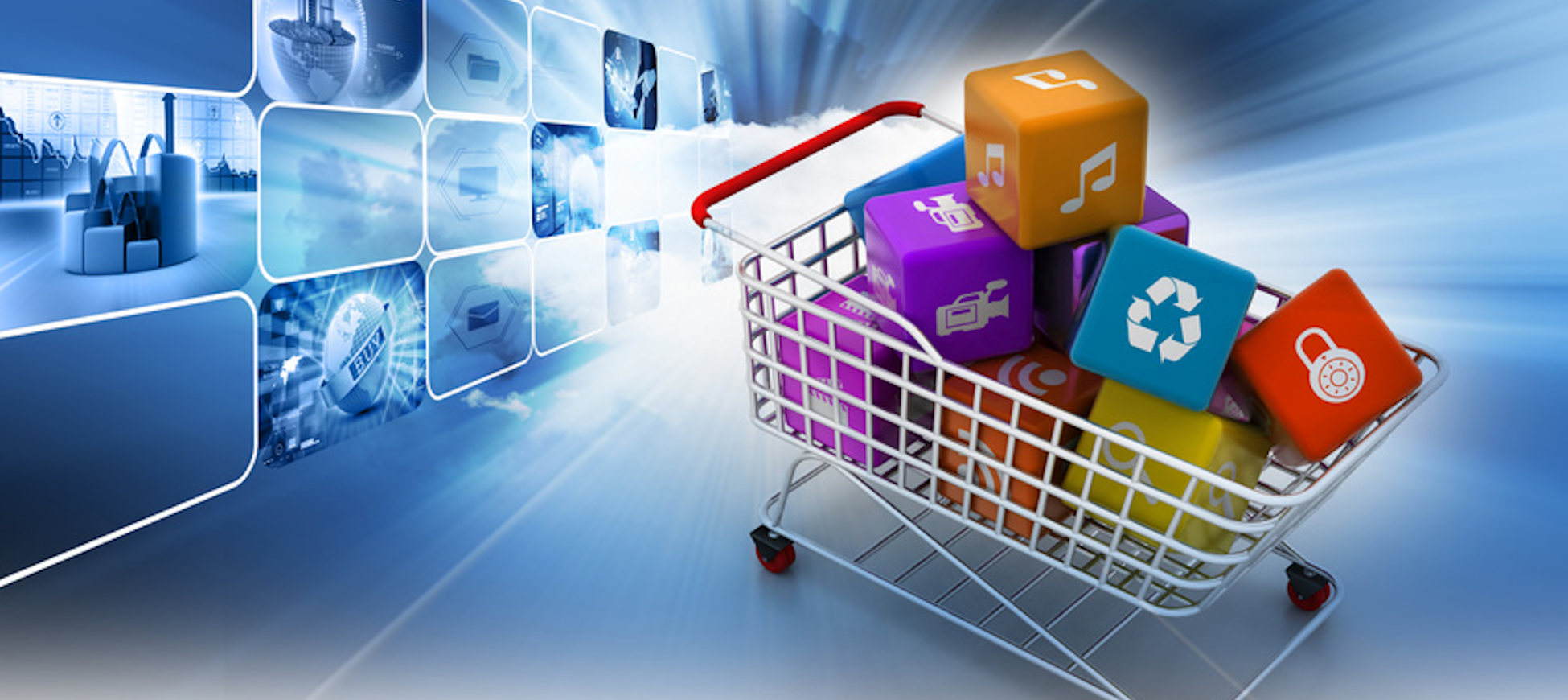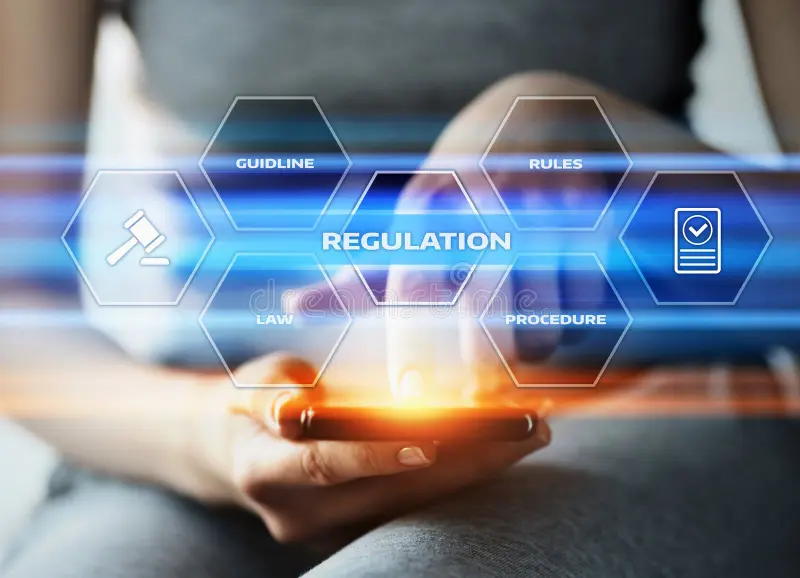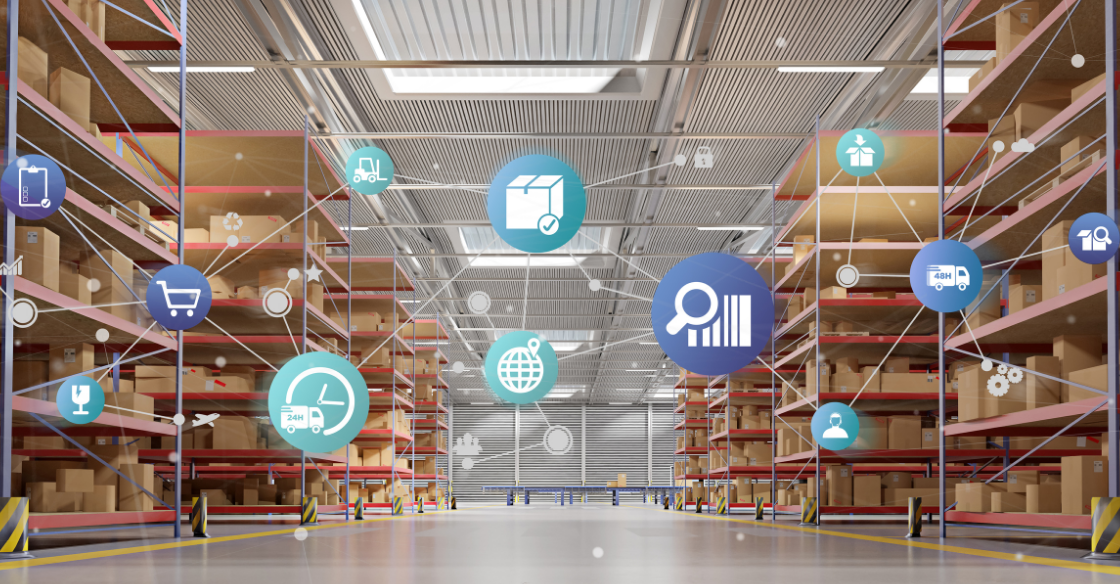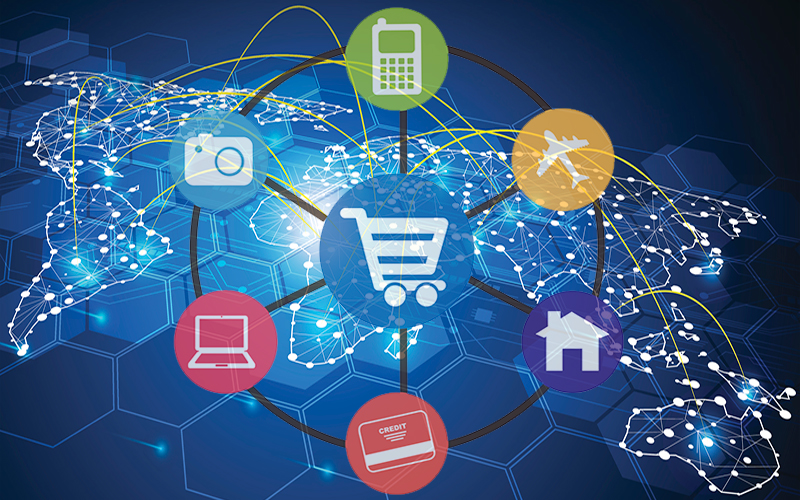E-commerce
E-commerce (electronic commerce) is the activity of electronically buying or selling products on online services or over the Internet. E-commerce draws on technologies such as mobile commerce, electronic funds transfer, supply chain management, Internet marketing, online transaction processing, electronic data interchange (EDI), inventory management systems, and automated data collection systems. E-commerce is the largest sector of the electronics industry and is in turn driven by the technological advances of the semiconductor industry.
 E-commerce typically uses the web for at least a part of a transaction’s life cycle although it may also use other technologies such as e-mail. Typical e-commerce transactions include the purchase of products (such as books from Amazon) or services (such as music downloads in the form of digital distribution such as the iTunes Store).
There are three areas of e-commerce: online retailing, electronic markets, and online auctions.
E-commerce is supported by electronic business. The existence value of e-commerce is to allow consumers to shop online and pay online through the Internet, saving the time and space of customers and enterprises, greatly improving transaction efficiency, especially for busy office workers, and also saving a lot of valuable time.
There are five essential categories of E-commerce:
Business to Business;
Business to Consumer;
Business to Government;
Consumer to Business; and
Consumer to Consumer.
E-commerce typically uses the web for at least a part of a transaction’s life cycle although it may also use other technologies such as e-mail. Typical e-commerce transactions include the purchase of products (such as books from Amazon) or services (such as music downloads in the form of digital distribution such as the iTunes Store).
There are three areas of e-commerce: online retailing, electronic markets, and online auctions.
E-commerce is supported by electronic business. The existence value of e-commerce is to allow consumers to shop online and pay online through the Internet, saving the time and space of customers and enterprises, greatly improving transaction efficiency, especially for busy office workers, and also saving a lot of valuable time.
There are five essential categories of E-commerce:
Business to Business;
Business to Consumer;
Business to Government;
Consumer to Business; and
Consumer to Consumer.
 E-commerce businesses may also employ some or all of the following:
E-commerce businesses may also employ some or all of the following:
- Online shopping for retail sales direct to consumers via web sites and mobile apps, conversational commerce via live chat, chatbots, and voice assistants.
- Providing or participating in online marketplaces, which process third-party business-to-consumer (B2C) or consumer-to-consumer (C2C) sales;
- Business-to-business (B2B) buying and selling.
- Gathering and using demographic data through web contacts and social media.
- B2B electronic data interchange.
- Marketing to prospective and established customers by e-mail or fax (for example, with newsletters).
- Engaging in pretail for launching new products and services.
- Online financial exchanges for currency exchanges or trading purposes.






Forms
 Contemporary electronic commerce can be classified into two categories. The first category is business based on types of goods sold (involves everything from ordering “digital” content for immediate online consumption, to ordering conventional goods and services, to “meta” services to facilitate other types of electronic commerce). The second category is based on the nature of the participant (B2B, B2C, C2B and C2C).
On the institutional level, big corporations and financial institutions use the internet to exchange financial data to facilitate domestic and international business. Data integrity and security are pressing issues for electronic commerce.
Aside from traditional e-commerce, the terms m-Commerce (mobile commerce) as well (around 2013) t-Commerce have also been used.
Contemporary electronic commerce can be classified into two categories. The first category is business based on types of goods sold (involves everything from ordering “digital” content for immediate online consumption, to ordering conventional goods and services, to “meta” services to facilitate other types of electronic commerce). The second category is based on the nature of the participant (B2B, B2C, C2B and C2C).
On the institutional level, big corporations and financial institutions use the internet to exchange financial data to facilitate domestic and international business. Data integrity and security are pressing issues for electronic commerce.
Aside from traditional e-commerce, the terms m-Commerce (mobile commerce) as well (around 2013) t-Commerce have also been used.
Logistics
 Logistics in e-commerce mainly concerns fulfillment. Online markets and retailers have to find the best possible way to fill orders and deliver products. Small companies usually control their own logistic operation because they do not have the ability to hire an outside company. Most large companies hire a fulfillment service that takes care of a company’s logistic needs.
The optimization of logistics processes that contains long-term investment in an efficient storage infrastructure system and adoption of inventory management strategies is crucial to prioritize customer satisfaction throughout the entire process, from order placement to final delivery.
Logistics in e-commerce mainly concerns fulfillment. Online markets and retailers have to find the best possible way to fill orders and deliver products. Small companies usually control their own logistic operation because they do not have the ability to hire an outside company. Most large companies hire a fulfillment service that takes care of a company’s logistic needs.
The optimization of logistics processes that contains long-term investment in an efficient storage infrastructure system and adoption of inventory management strategies is crucial to prioritize customer satisfaction throughout the entire process, from order placement to final delivery.
Governmental regulation
 Conflict of laws in cyberspace is a major hurdle for harmonization of legal framework for e-commerce around the world. In order to give a uniformity to e-commerce law around the world, many countries adopted the UNCITRAL Model Law on Electronic Commerce (1996).
Internationally there is the International Consumer Protection and Enforcement Network (ICPEN), which was formed in 1991 from an informal network of government customer fair trade organisations. The purpose was stated as being to find ways of co-operating on tackling consumer problems connected with cross-border transactions in both goods and services, and to help ensure exchanges of information among the participants for mutual benefit and understanding. From this came Econsumer.gov, an ICPEN initiative since April 2001. It is a portal to report complaints about online and related transactions with foreign companies.
There is also Asia Pacific Economic Cooperation. APEC was established in 1989 with the vision of achieving stability, security and prosperity for the region through free and open trade and investment. APEC has an Electronic Commerce Steering Group as well as working on common privacy regulations throughout the APEC region.
Conflict of laws in cyberspace is a major hurdle for harmonization of legal framework for e-commerce around the world. In order to give a uniformity to e-commerce law around the world, many countries adopted the UNCITRAL Model Law on Electronic Commerce (1996).
Internationally there is the International Consumer Protection and Enforcement Network (ICPEN), which was formed in 1991 from an informal network of government customer fair trade organisations. The purpose was stated as being to find ways of co-operating on tackling consumer problems connected with cross-border transactions in both goods and services, and to help ensure exchanges of information among the participants for mutual benefit and understanding. From this came Econsumer.gov, an ICPEN initiative since April 2001. It is a portal to report complaints about online and related transactions with foreign companies.
There is also Asia Pacific Economic Cooperation. APEC was established in 1989 with the vision of achieving stability, security and prosperity for the region through free and open trade and investment. APEC has an Electronic Commerce Steering Group as well as working on common privacy regulations throughout the APEC region.
E-commerce
globally 2020 – 2030
internet users purchased online
0
%
all purchases through E-commerce.
0
%
mobile E-commerce global sales
$
0
B
Global trends
 E-commerce has become an important tool for small and large businesses worldwide, not only to sell to customers, but also to engage them.
Cross-border e-Commerce is also an essential field for e-Commerce businesses. It has responded to the trend of globalization. It shows that numerous firms have opened up new businesses, expanded new markets, and overcome trade barriers; more and more enterprises have started exploring the cross-border cooperation field.
In addition, compared with traditional cross-border trade, the information on cross-border e-commerce is more concealed. In the era of globalization, cross-border e-commerce for inter-firm companies means the activities, interactions, or social relations of two or more e-commerce enterprises.
However, the success of cross-border e-commerce promotes the development of small and medium-sized firms, and it has finally become a new transaction mode. It has helped the companies solve financial problems and realize the reasonable allocation of resources field. SMEs (small and medium enterprises) can also precisely match the demand and supply in the market, having the industrial chain majorization and creating more revenues for companies.
In 2012, e-commerce sales topped $1 trillion for the first time in history. Mobile devices are playing an increasing role in the mix of e-commerce, this is also commonly called mobile commerce, or m-commerce. In 2014, one estimate saw purchases made on mobile devices making up 25% of the market by 2017.
E-commerce has become an important tool for small and large businesses worldwide, not only to sell to customers, but also to engage them.
Cross-border e-Commerce is also an essential field for e-Commerce businesses. It has responded to the trend of globalization. It shows that numerous firms have opened up new businesses, expanded new markets, and overcome trade barriers; more and more enterprises have started exploring the cross-border cooperation field.
In addition, compared with traditional cross-border trade, the information on cross-border e-commerce is more concealed. In the era of globalization, cross-border e-commerce for inter-firm companies means the activities, interactions, or social relations of two or more e-commerce enterprises.
However, the success of cross-border e-commerce promotes the development of small and medium-sized firms, and it has finally become a new transaction mode. It has helped the companies solve financial problems and realize the reasonable allocation of resources field. SMEs (small and medium enterprises) can also precisely match the demand and supply in the market, having the industrial chain majorization and creating more revenues for companies.
In 2012, e-commerce sales topped $1 trillion for the first time in history. Mobile devices are playing an increasing role in the mix of e-commerce, this is also commonly called mobile commerce, or m-commerce. In 2014, one estimate saw purchases made on mobile devices making up 25% of the market by 2017.
 For traditional businesses, one research stated that information technology and cross-border e-commerce is a good opportunity for the rapid development and growth of enterprises. Many companies have invested an enormous volume of investment in mobile applications. The DeLone and McLean Model stated that three perspectives contribute to a successful e-business: information system quality, service quality and users’ satisfaction.
There is no limit of time and space, there are more opportunities to reach out to customers around the world, and to cut down unnecessary intermediate links, thereby reducing the cost price, and can benefit from one on one large customer data analysis, to achieve a high degree of personal customization strategic plan, in order to fully enhance the core competitiveness of the products in the company.
Modern 3D graphics technologies, such as Facebook 3D Posts, are considered by some social media marketers and advertisers as a preferable way to promote consumer goods than static photos, and some brands like Sony are already paving the way for augmented reality commerce. Wayfair now lets you inspect a 3D version of its furniture in a home setting before buying.
For traditional businesses, one research stated that information technology and cross-border e-commerce is a good opportunity for the rapid development and growth of enterprises. Many companies have invested an enormous volume of investment in mobile applications. The DeLone and McLean Model stated that three perspectives contribute to a successful e-business: information system quality, service quality and users’ satisfaction.
There is no limit of time and space, there are more opportunities to reach out to customers around the world, and to cut down unnecessary intermediate links, thereby reducing the cost price, and can benefit from one on one large customer data analysis, to achieve a high degree of personal customization strategic plan, in order to fully enhance the core competitiveness of the products in the company.
Modern 3D graphics technologies, such as Facebook 3D Posts, are considered by some social media marketers and advertisers as a preferable way to promote consumer goods than static photos, and some brands like Sony are already paving the way for augmented reality commerce. Wayfair now lets you inspect a 3D version of its furniture in a home setting before buying.








Impacts
Impact on markets and retailers
 E-commerce markets are growing at noticeable rates. The online market is expected to grow by 56% in 2015–2020. In 2017, retail e-commerce sales worldwide amounted to 2.3 trillion US dollars and e-retail revenues are projected to grow to 4.891 trillion US dollars in 2021. Traditional markets are only expected 2% growth during the same time. Brick and mortar retailers are struggling because of online retailer’s ability to offer lower prices and higher efficiency. Many larger retailers are able to maintain a presence offline and online by linking physical and online offerings.
E-commerce allows customers to overcome geographical barriers and allows them to purchase products anytime and from anywhere. Online and traditional markets have different strategies for conducting business. Traditional retailers offer fewer assortment of products because of shelf space where, online retailers often hold no inventory but send customer orders directly to the manufacturer. The pricing strategies are also different for traditional and online retailers. Traditional retailers base their prices on store traffic and the cost to keep inventory. Online retailers base prices on the speed of delivery.
E-commerce markets are growing at noticeable rates. The online market is expected to grow by 56% in 2015–2020. In 2017, retail e-commerce sales worldwide amounted to 2.3 trillion US dollars and e-retail revenues are projected to grow to 4.891 trillion US dollars in 2021. Traditional markets are only expected 2% growth during the same time. Brick and mortar retailers are struggling because of online retailer’s ability to offer lower prices and higher efficiency. Many larger retailers are able to maintain a presence offline and online by linking physical and online offerings.
E-commerce allows customers to overcome geographical barriers and allows them to purchase products anytime and from anywhere. Online and traditional markets have different strategies for conducting business. Traditional retailers offer fewer assortment of products because of shelf space where, online retailers often hold no inventory but send customer orders directly to the manufacturer. The pricing strategies are also different for traditional and online retailers. Traditional retailers base their prices on store traffic and the cost to keep inventory. Online retailers base prices on the speed of delivery.
 There are two ways for marketers to conduct business through e-commerce: fully online or online along with a brick and mortar store. Online marketers can offer lower prices, greater product selection, and high efficiency rates. Many customers prefer online markets if the products can be delivered quickly at relatively low price.
However, online retailers cannot offer the physical experience that traditional retailers can. It can be difficult to judge the quality of a product without the physical experience, which may cause customers to experience product or seller uncertainty. Another issue regarding the online market is concerns about the security of online transactions. Many customers remain loyal to well-known retailers because of this issue.
Security is a primary problem for e-commerce in developed and developing countries. E-commerce security is protecting businesses’ websites and customers from unauthorized access, use, alteration, or destruction. The type of threats include: malicious codes, unwanted programs (ad ware, spyware), phishing, hacking, and cyber vandalism. E-commerce websites use different tools to avert security threats. These tools include firewalls, encryption software, digital certificates, and passwords.
There are two ways for marketers to conduct business through e-commerce: fully online or online along with a brick and mortar store. Online marketers can offer lower prices, greater product selection, and high efficiency rates. Many customers prefer online markets if the products can be delivered quickly at relatively low price.
However, online retailers cannot offer the physical experience that traditional retailers can. It can be difficult to judge the quality of a product without the physical experience, which may cause customers to experience product or seller uncertainty. Another issue regarding the online market is concerns about the security of online transactions. Many customers remain loyal to well-known retailers because of this issue.
Security is a primary problem for e-commerce in developed and developing countries. E-commerce security is protecting businesses’ websites and customers from unauthorized access, use, alteration, or destruction. The type of threats include: malicious codes, unwanted programs (ad ware, spyware), phishing, hacking, and cyber vandalism. E-commerce websites use different tools to avert security threats. These tools include firewalls, encryption software, digital certificates, and passwords. Impact on supply chain management
 For a long time, companies had been troubled by the gap between the benefits which supply chain technology has and the solutions to deliver those benefits. However, the emergence of e-commerce has provided a more practical and effective way of delivering the benefits of the new supply chain technologies.
E-commerce has the capability to integrate all inter-company and intra-company functions, meaning that the three flows (physical flow, financial flow and information flow) of the supply chain could be also affected by e-commerce. The affections on physical flows improved the way of product and inventory movement level for companies. For the information flows, e-commerce optimized the capacity of information processing than companies used to have, and for the financial flows, e-commerce allows companies to have more efficient payment and settlement solutions.
For a long time, companies had been troubled by the gap between the benefits which supply chain technology has and the solutions to deliver those benefits. However, the emergence of e-commerce has provided a more practical and effective way of delivering the benefits of the new supply chain technologies.
E-commerce has the capability to integrate all inter-company and intra-company functions, meaning that the three flows (physical flow, financial flow and information flow) of the supply chain could be also affected by e-commerce. The affections on physical flows improved the way of product and inventory movement level for companies. For the information flows, e-commerce optimized the capacity of information processing than companies used to have, and for the financial flows, e-commerce allows companies to have more efficient payment and settlement solutions.
 In addition, e-commerce has a more sophisticated level of impact on supply chains:
Firstly, the performance gap will be eliminated since companies can identify gaps between different levels of supply chains by electronic means of solutions;
Secondly, as a result of e-commerce emergence, new capabilities such implementing ERP systems, like SAP ERP, Xero, or Megaventory, have helped companies to manage operations with customers and suppliers. Yet these new capabilities are still not fully exploited.
Thirdly, technology companies would keep investing on new e-commerce software solutions as they are expecting investment return.
Fourthly, e-commerce would help to solve many aspects of issues that companies may feel difficult to cope with, such as political barriers or cross-country changes.
Finally, e-commerce provides companies a more efficient and effective way to collaborate with each other within the supply chain.
In addition, e-commerce has a more sophisticated level of impact on supply chains:
Firstly, the performance gap will be eliminated since companies can identify gaps between different levels of supply chains by electronic means of solutions;
Secondly, as a result of e-commerce emergence, new capabilities such implementing ERP systems, like SAP ERP, Xero, or Megaventory, have helped companies to manage operations with customers and suppliers. Yet these new capabilities are still not fully exploited.
Thirdly, technology companies would keep investing on new e-commerce software solutions as they are expecting investment return.
Fourthly, e-commerce would help to solve many aspects of issues that companies may feel difficult to cope with, such as political barriers or cross-country changes.
Finally, e-commerce provides companies a more efficient and effective way to collaborate with each other within the supply chain.
Impact on employment
 E-commerce helps create new job opportunities due to information related services, software app and digital products. It also causes job losses. The areas with the greatest predicted job-loss are retail, postal, and travel agencies.
The development of e-commerce will create jobs that require highly skilled workers to manage large amounts of information, customer demands, and production processes. In contrast, people with poor technical skills cannot enjoy the wages welfare.
On the other hand, because e-commerce requires sufficient stocks that could be delivered to customers in time, the warehouse becomes an important element. Warehouse needs more staff to manage, supervise and organize, thus the condition of warehouse environment will be concerned by employees.
E-commerce helps create new job opportunities due to information related services, software app and digital products. It also causes job losses. The areas with the greatest predicted job-loss are retail, postal, and travel agencies.
The development of e-commerce will create jobs that require highly skilled workers to manage large amounts of information, customer demands, and production processes. In contrast, people with poor technical skills cannot enjoy the wages welfare.
On the other hand, because e-commerce requires sufficient stocks that could be delivered to customers in time, the warehouse becomes an important element. Warehouse needs more staff to manage, supervise and organize, thus the condition of warehouse environment will be concerned by employees.
Impact on customers
 E-commerce brings convenience for customers as they do not have to leave home and only need to browse websites online, especially for buying products which are not sold in nearby shops. It could help customers buy a wider range of products and save customers’ time. Consumers also gain power through online shopping. They are able to research products and compare prices among retailers.
Thanks to the practice of user-generated ratings and reviews, customers can also see what other people think of a product, and decide before buying if they want to spend money on it. Also, online shopping often provides sales promotion or discounts code, thus it is more price effective for customers.
Moreover, e-commerce provides products’ detailed information; even the in-store staff cannot offer such detailed explanation. Customers can also review and track the order history online.
E-commerce technologies cut transaction costs by allowing both manufactures and consumers to skip through the intermediaries. This is achieved through by extending the search area best price deals and by group purchase. The success of e-commerce in urban and regional levels depend on how the local firms and consumers have adopted to e-commerce.
E-commerce brings convenience for customers as they do not have to leave home and only need to browse websites online, especially for buying products which are not sold in nearby shops. It could help customers buy a wider range of products and save customers’ time. Consumers also gain power through online shopping. They are able to research products and compare prices among retailers.
Thanks to the practice of user-generated ratings and reviews, customers can also see what other people think of a product, and decide before buying if they want to spend money on it. Also, online shopping often provides sales promotion or discounts code, thus it is more price effective for customers.
Moreover, e-commerce provides products’ detailed information; even the in-store staff cannot offer such detailed explanation. Customers can also review and track the order history online.
E-commerce technologies cut transaction costs by allowing both manufactures and consumers to skip through the intermediaries. This is achieved through by extending the search area best price deals and by group purchase. The success of e-commerce in urban and regional levels depend on how the local firms and consumers have adopted to e-commerce.
